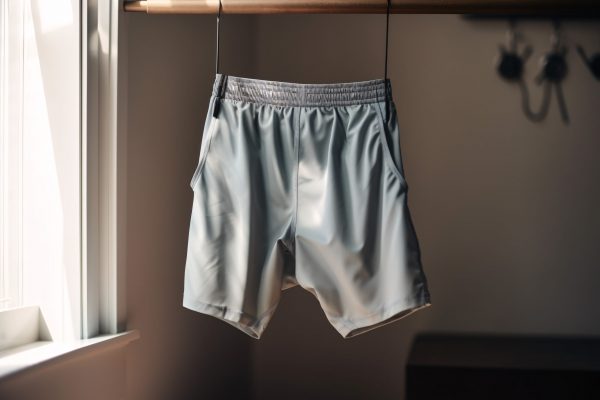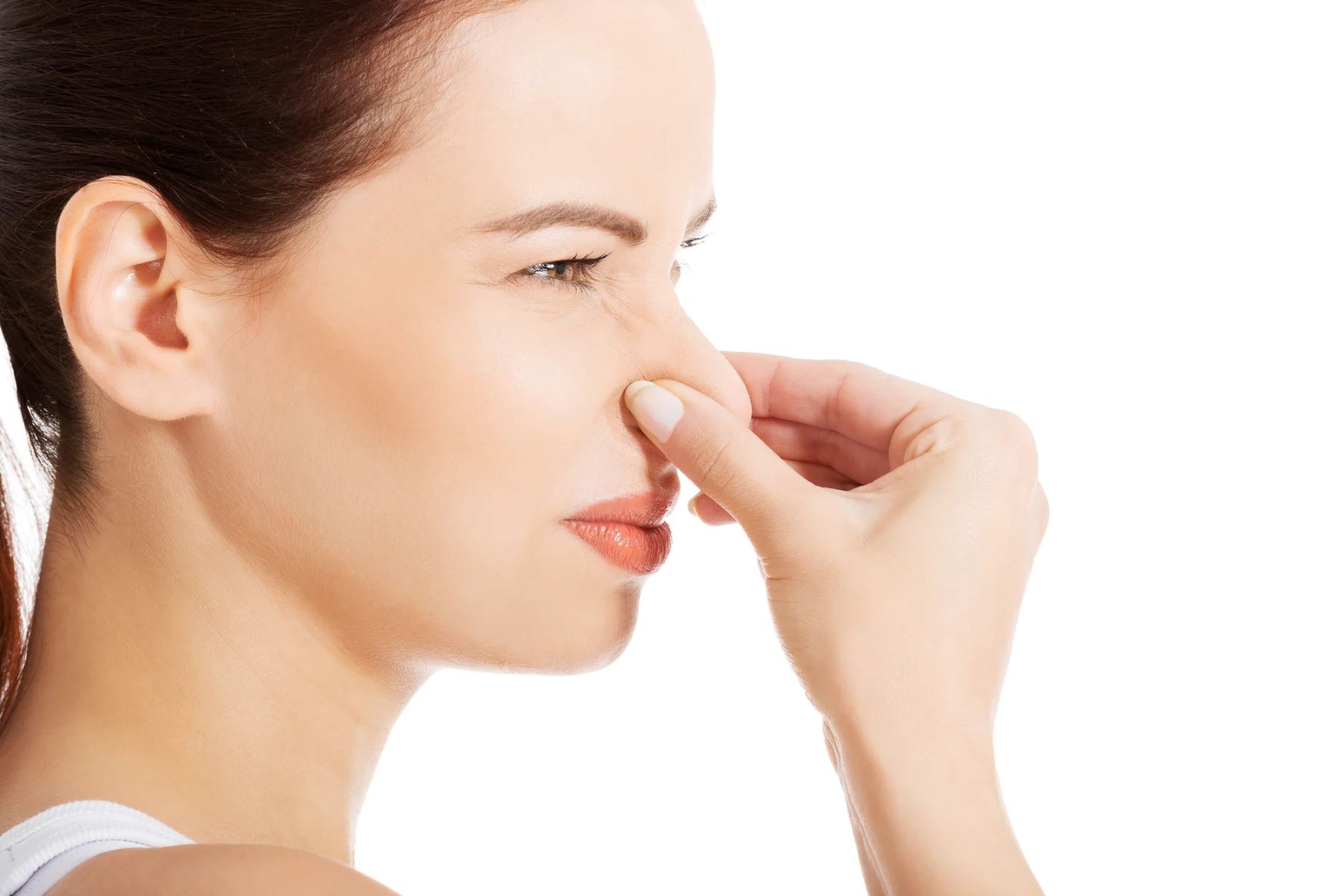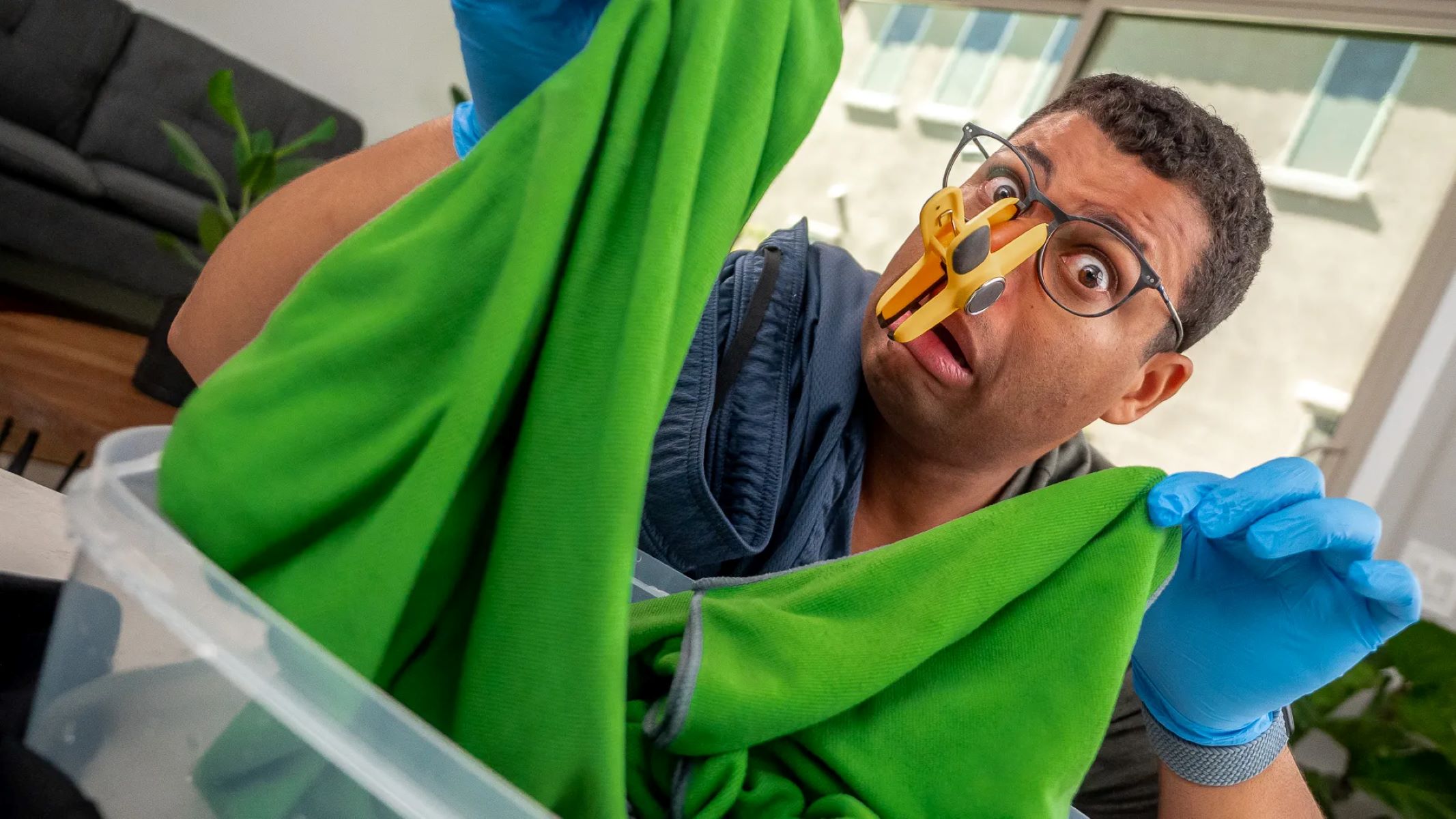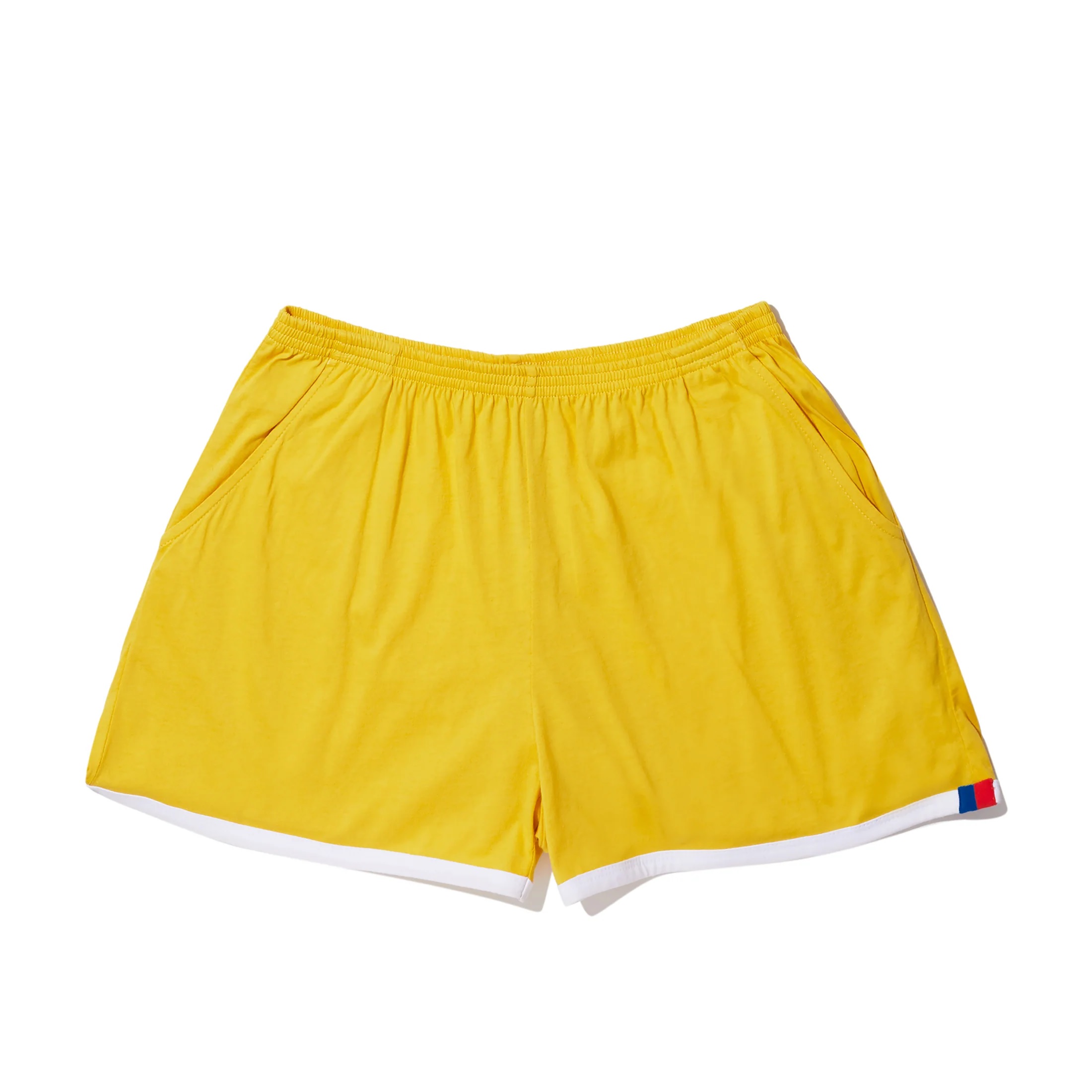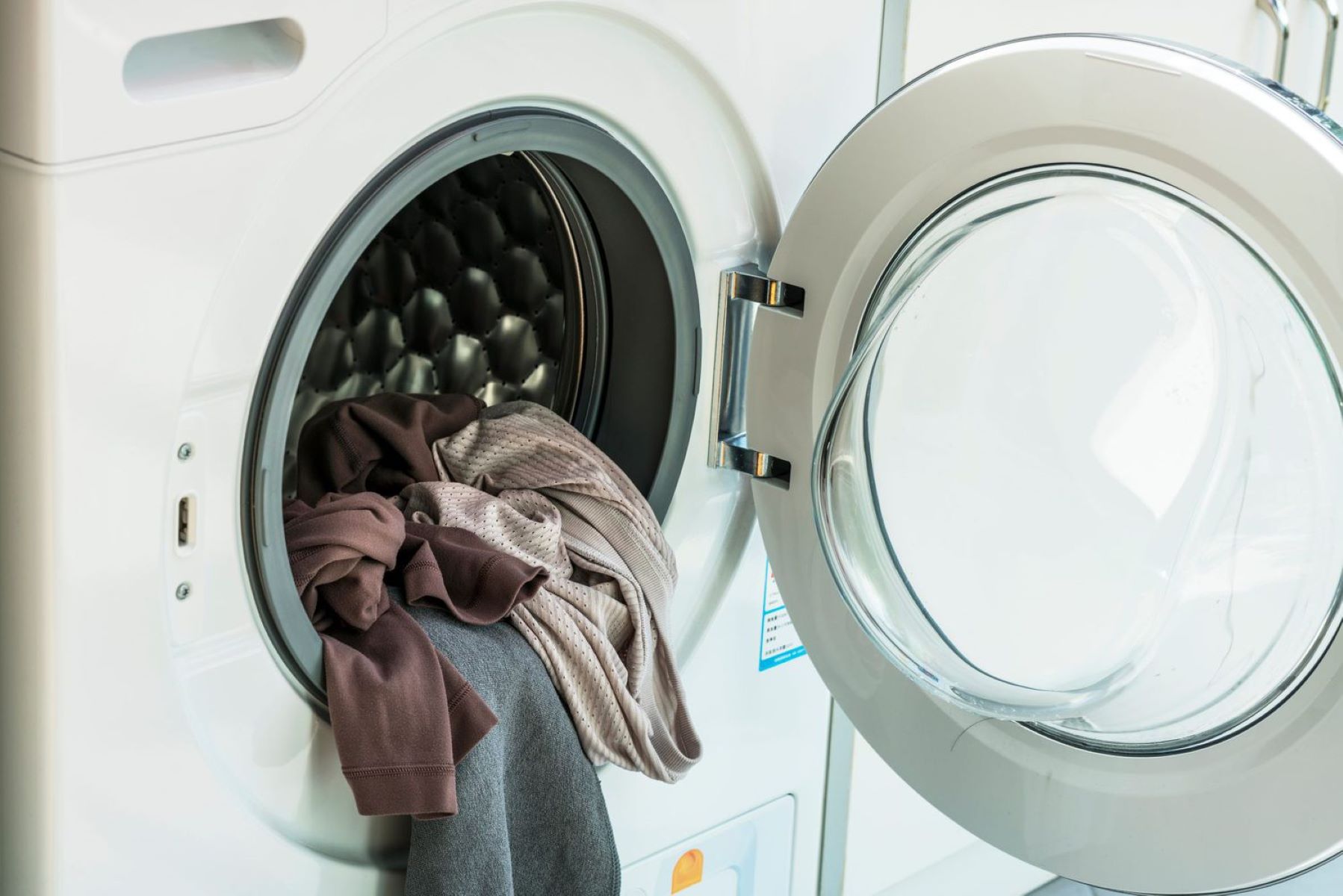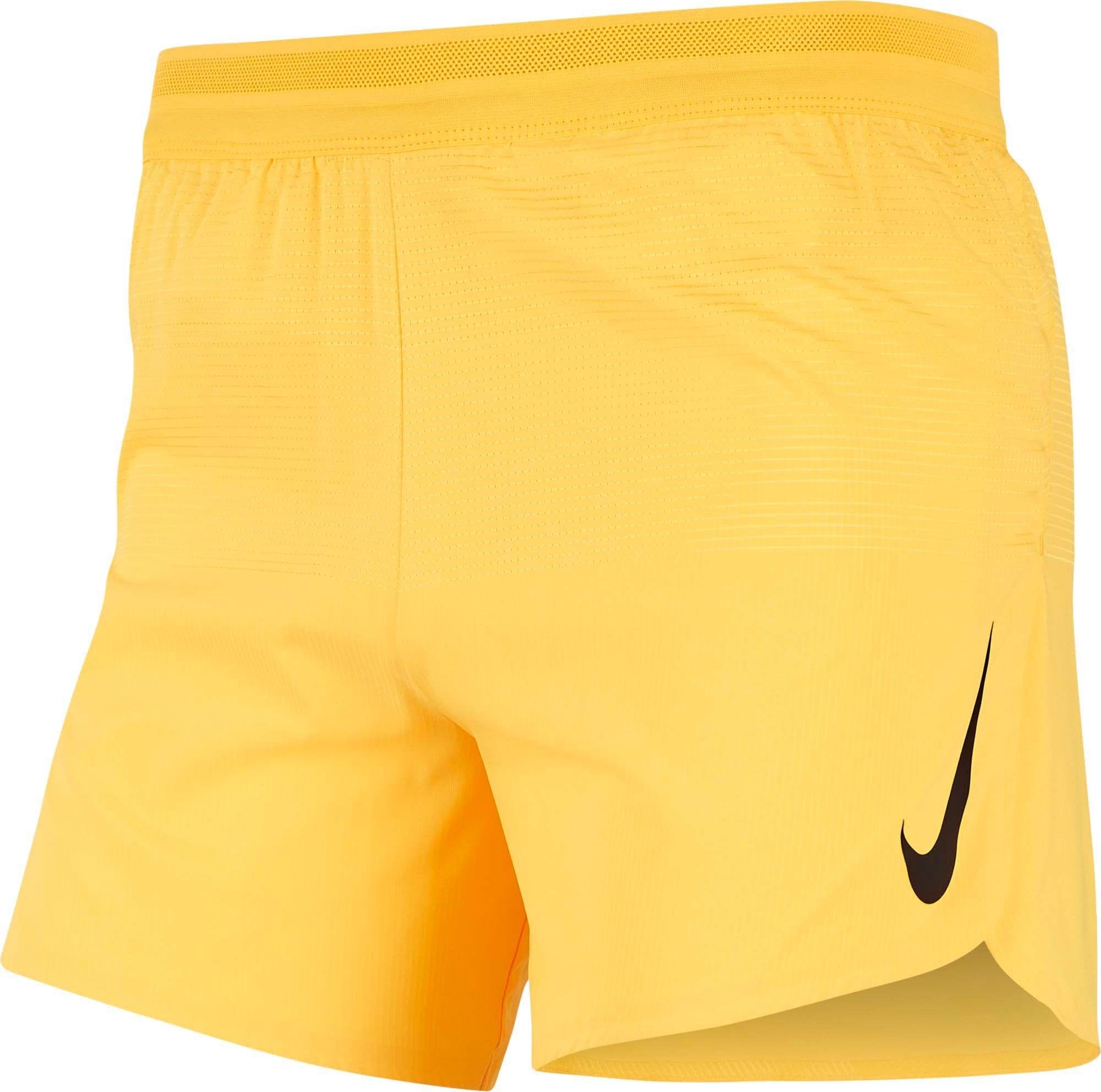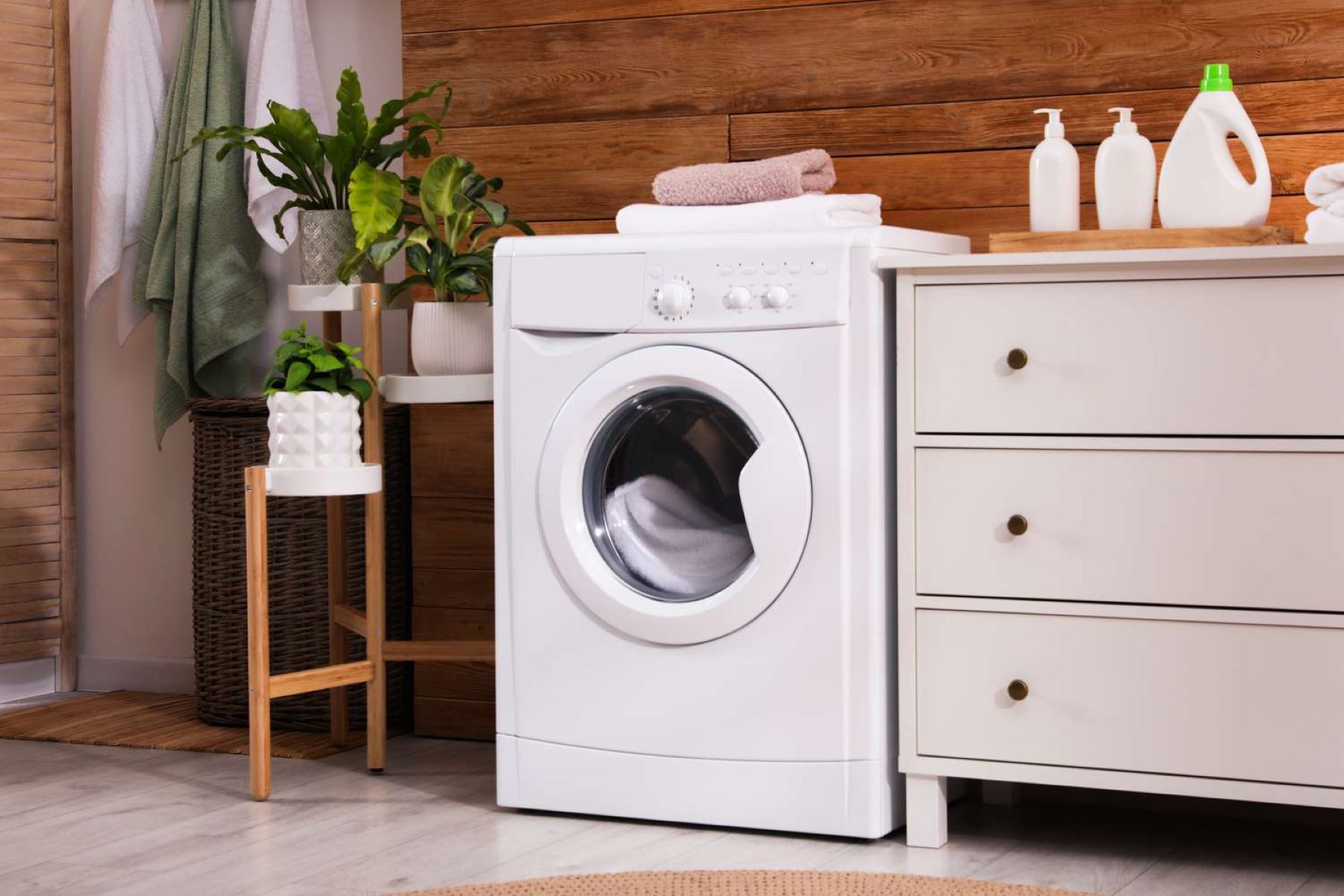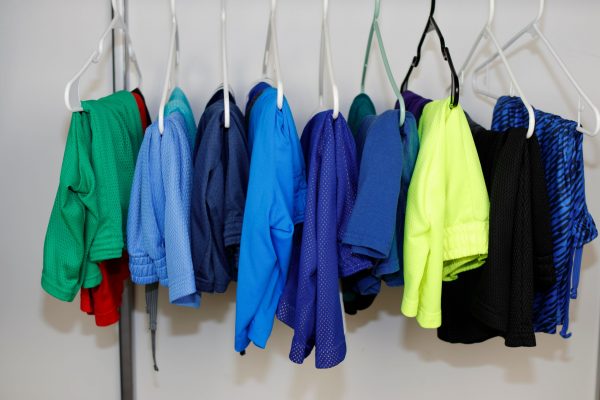Home>Misc>Featured>Why Do My Workout Clothes Smell Like Ammonia
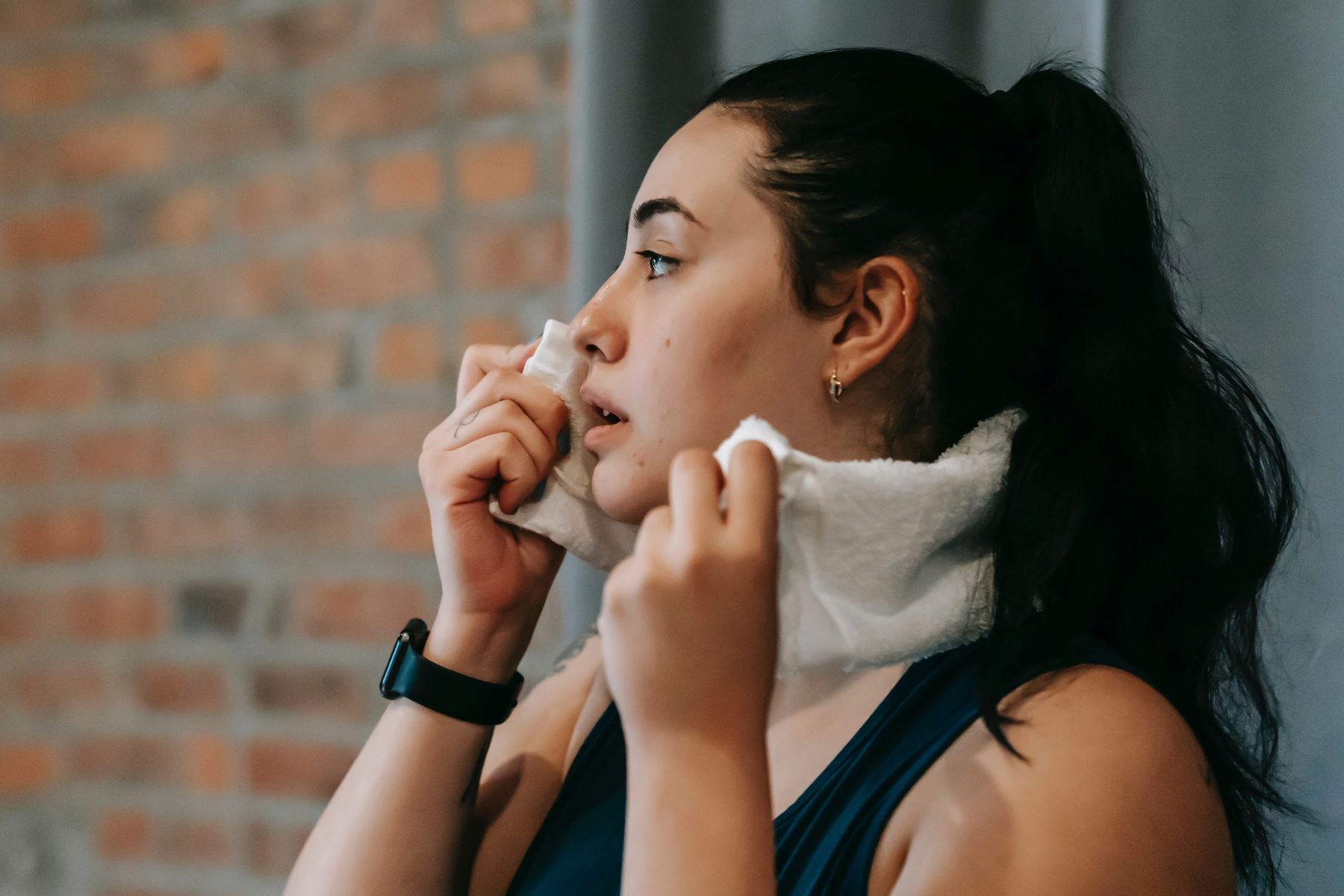

Featured
Why Do My Workout Clothes Smell Like Ammonia
Modified: January 2, 2024
Discover why your workout clothes smell like ammonia and how to get rid of the odor. Get featured tips and tricks for fresh and odor-free activewear.
Introduction
Have you ever experienced the unpleasant surprise of pulling your workout clothes out of the laundry, only to be greeted by a strong smell of ammonia? You may be left wondering why your activewear, which is supposed to help you feel fresh and clean during your workouts, is emitting such a foul odor. In this article, we will delve into the reasons behind the ammonia smell in workout clothes and discuss how to prevent it.
Wearing the right clothes for your workouts is essential. Not only do they provide comfort and support, but they also help wick away sweat and keep you feeling dry. However, after intense physical activity, especially in hot and humid conditions, your clothes can become a breeding ground for bacteria and fungi, leading to an unpleasant odor. The smell of ammonia often accompanies this bacterial growth, leaving your workout gear smelling less than desirable.
Understanding why your workout clothes smell like ammonia is the first step in addressing this issue. There are several factors that contribute to this odorous phenomenon, including sweat composition, bacterial growth, and improper washing practices. By identifying and tackling these factors, you can ensure that your workout clothes stay fresh, comfortable, and free from ammonia odors.
Understanding the Odor of Ammonia in Workout Clothes
Before diving into the causes and solutions, it’s important to understand why your workout clothes develop an ammonia smell. Ammonia, with its pungent and distinct odor, is a byproduct of bodily functions, specifically the breakdown of sweat. When your body produces sweat during exercise, it contains various components, including water, electrolytes, and waste products.
One of the waste products found in sweat is urea, a compound that is produced when the body breaks down proteins. Under normal circumstances, urea is excreted through urine. However, during intense physical activity, the body may utilize sweat glands to eliminate excess waste, including urea.
When sweat-soaked workout clothes are left unwashed or exposed to damp environments, the urea in the sweat can interact with bacteria on the fabric, leading to the production of ammonia. The presence of ammonia in your workout clothes is what causes that unpleasant smell that can linger even after washing.
It’s important to note that ammonia odor doesn’t necessarily mean that your clothes are dirty or unhygienic. It’s a natural occurrence that can happen even with regular washing. However, it’s essential to address this issue to maintain the freshness and longevity of your workout clothes, as well as to prevent the odor from becoming overpowering and unpleasant.
Causes of Ammonia Odor in Workout Clothes
The presence of ammonia odor in your workout clothes can be attributed to several factors. Understanding these causes is crucial in order to effectively prevent and eliminate the unpleasant smell.
One of the primary causes of ammonia odor is the composition of sweat itself. As mentioned earlier, sweat contains urea, a waste product that can break down and produce ammonia. The more intense and prolonged your workout, the higher the concentration of urea in your sweat, making it more likely to develop an ammonia smell.
Another factor that contributes to the ammonia odor is bacterial growth. Bacteria naturally thrive in warm and moist environments, making your damp workout clothes an ideal breeding ground. When bacteria come into contact with the urea in your sweat, they can produce enzymes that convert the urea into ammonia. This bacterial activity is what amplifies the odor in your clothes.
Improper laundering of your workout clothes can also lead to persistent ammonia odor. If you don’t wash your clothes immediately after a workout or if you don’t use proper laundering techniques, residual sweat can linger in the fabric. This residual sweat provides a food source for bacteria, allowing them to continue producing ammonia and perpetuating the unpleasant smell.
Additionally, certain fabrics and materials used in workout clothing can be more prone to trapping sweat and odor. Synthetic materials like polyester and nylon, often used in activewear, are known to be less breathable and may contribute to a build-up of sweat and bacteria. This can lead to a stronger ammonia smell compared to clothes made from natural materials like cotton or bamboo.
By understanding the causes of ammonia odor in workout clothes, you can take proactive steps to prevent it and keep your activewear fresh and odor-free. In the next sections, we will explore effective solutions to tackle this issue and ensure that your workout clothes smell clean and pleasant.
Sweat Composition and Ammonia Production
The composition of sweat plays a crucial role in the production of ammonia odor in workout clothes. Understanding the relationship between sweat composition and ammonia production can help you better manage and prevent this unpleasant smell.
Sweat, the body’s natural cooling mechanism, is primarily composed of water, electrolytes, and waste products. One of the waste products found in sweat is urea, which is produced when the body breaks down proteins. Urea serves as a carrier for ammonia, as it readily converts to ammonia in the presence of enzymes.
During intense physical activity, the body produces more sweat as it works to maintain an optimal temperature. This increased sweat production means there is a higher concentration of urea present in the sweat. As the sweat-soaked clothes dry, this urea can interact with bacteria on the fabric, leading to the production of ammonia.
It’s important to note that the rate of ammonia production in sweat-soaked clothes can vary based on a few factors. The duration and intensity of your workout play a role in the amount of sweat produced and the concentration of urea present. Longer and more intense workouts can result in higher levels of urea and, consequently, more ammonia production.
Additionally, individual factors such as diet and hydration can influence sweat composition and the subsequent production of ammonia. Diets high in protein can result in higher levels of urea, increasing the likelihood of ammonia odor. Proper hydration, on the other hand, dilutes the concentration of urea in sweat, potentially reducing the intensity of the ammonia smell.
To mitigate the production of ammonia odor in workout clothes, it’s important to remember that sweat composition is a natural bodily process. However, there are preventative measures you can take to manage this issue, such as proper laundering techniques and utilizing odor-reducing products. We will explore these solutions in more detail in the following sections.
Bacterial Growth and Ammonia Production
Bacterial growth is a key contributor to the production of ammonia odor in workout clothes. Understanding how bacteria interact with sweat can help you effectively manage and eliminate the unpleasant smell.
Bacteria thrive in warm and moist environments, making your sweaty workout clothes an ideal breeding ground. When bacteria come into contact with the urea in your sweat, they produce enzymes that break down the urea into ammonia. This bacterial activity is what amplifies the ammonia smell in your clothes.
It’s important to note that not all bacteria produce ammonia. The specific bacteria responsible for ammonia production in your workout clothes are known as urease-positive bacteria. These bacteria possess an enzyme called urease, which enables them to convert urea into ammonia.
The bacteria that cause ammonia odor in workout clothes are commonly found on the skin and can transfer onto the fabric during your workout. Factors such as the intensity and duration of your exercise can contribute to higher bacterial loads on your clothes, leading to more ammonia production.
Moreover, the type of fabric used in your workout clothes can impact bacterial growth. Synthetic materials like polyester and nylon, which are commonly used in activewear, are less breathable and more likely to trap moisture. This trapped moisture creates an environment conducive to bacterial growth and increases the chances of ammonia production.
To combat bacterial growth and prevent ammonia odor, proper laundering of your workout clothes is essential. Washing your clothes immediately after each workout helps remove bacteria and sweat before they have a chance to multiply. Additionally, utilizing odor-reducing products that target bacteria can help eliminate the source of ammonia production and keep your activewear smelling fresh.
By understanding the role of bacterial growth in ammonia production, you can take proactive measures to address this issue. Implementing good hygiene practices, using appropriate detergents, and ensuring proper ventilation of your workout clothes can all contribute to reducing bacterial growth and eliminating ammonia odor.
Improper Washing and Residual Sweat
Improper washing practices and the presence of residual sweat are common culprits behind persistent ammonia odor in workout clothes. By understanding the impact of these factors, you can adopt proper laundering techniques to eliminate the unpleasant smell.
When it comes to washing your workout clothes, timing is critical. Leaving sweaty clothes unwashed for an extended period can provide an opportunity for bacteria to multiply and produce more ammonia. It’s best to wash your clothes as soon as possible after each workout to minimize bacterial growth and prevent the buildup of sweat and odor.
In addition to prompt washing, using the appropriate detergent and washing machine settings is essential for effective odor removal. Regular detergents may not be specifically formulated to tackle sweat and bacteria. Look for detergents that are designed to eliminate odor, break down sweat residue, and combat bacterial growth. Selecting the right washing machine cycle, such as a longer and hotter cycle, can also aid in removing stubborn sweat stains and odor-causing bacteria.
Residual sweat left in your workout clothes can create a breeding ground for bacteria and contribute to the production of ammonia odor. Simply rinsing your clothes under water or using an inadequate amount of detergent may not be sufficient to remove all traces of sweat. Ensure that you thoroughly soak and agitate your clothes during the washing process to effectively remove all sweat and bacteria.
Drying your workout clothes properly is equally important. Hanging sweaty clothes to air dry without proper ventilation can lead to the growth of mold and mildew, which can exacerbate the ammonia smell. It’s best to air dry your clothes in a well-ventilated area or use a dryer with low heat to ensure complete drying and to prevent moisture buildup.
By implementing proper washing techniques and ensuring that your clothes are thoroughly clean and dry, you can significantly reduce the risk of residual sweat and bacterial growth, effectively eliminating the ammonia odor in your workout clothes.
Solutions to Prevent Ammonia Odor in Workout Clothes
Dealing with ammonia odor in workout clothes can be frustrating, but there are several effective solutions to prevent and eliminate this unpleasant smell. By implementing these strategies, you can keep your activewear fresh and odor-free.
1. Proper Laundering Techniques: Wash your workout clothes promptly after each use, using a detergent specifically designed to combat odor and bacteria. Follow the manufacturer’s instructions for the appropriate amount of detergent and water temperature. Additionally, opt for longer and hotter washing machine cycles to ensure thorough cleaning.
2. Special Considerations for High-Intensity Workouts: If you engage in high-intensity workouts that result in excessive sweating, consider rinsing your clothes under cold water before tossing them in the laundry. This pre-rinse helps remove some of the sweat and reduces the chances of lingering odor.
3. Using Odor-Reducing Products: There are various odor-reducing products available on the market that can be used in conjunction with regular laundering techniques. These products, such as specialized laundry boosters or odor-eliminating sprays, are designed to target bacteria and neutralize unpleasant odors.
4. Allow for Proper Drying: Ensure that your workout clothes are thoroughly dried before storing them. Hang them in a well-ventilated area or use a dryer with low heat to prevent the growth of mold and mildew, which can contribute to persistent ammonia odor.
5. Rotate Your Workout Clothes: Having multiple sets of workout clothes allows you to rotate them, giving each set time to fully dry and air out between uses. This reduces the chances of residual sweat and bacterial growth, minimizing the risk of ammonia odor.
6. Choose Breathable Fabrics: Opt for workout clothes made from breathable materials like cotton or bamboo, which promote better air circulation and reduce the likelihood of bacterial growth. If you prefer synthetic materials, look for those with moisture-wicking properties to help keep sweat at bay.
7. Wash Accessories and Gear: Don’t forget to wash your workout accessories and gear regularly as well. Items like headbands, wristbands, and gym bags can harbor bacteria and contribute to the overall odor. Follow the manufacturer’s instructions for proper cleaning and maintenance.
By following these solutions, you can effectively prevent ammonia odor in your workout clothes. Remember to prioritize hygiene and proper laundering techniques to keep your activewear fresh, comfortable, and ready for the next workout.
Proper Laundering Techniques
To prevent and eliminate ammonia odor in workout clothes, it is crucial to employ proper laundering techniques. Following these guidelines will help ensure that your activewear stays clean, fresh, and free from unpleasant smells.
1. Prompt Washing: Wash your workout clothes as soon as possible after each use. Allowing sweat-soaked clothes to sit for an extended period provides a breeding ground for bacteria, leading to the production of ammonia odor.
2. Sorting: Sort your laundry by color and fabric type. This prevents color bleeding and damage to delicate materials. Separating your workout clothes from everyday clothing allows for a more targeted approach to stain and odor removal.
3. Appropriate Detergent: Choose a detergent specifically formulated for sportswear or that has odor-eliminating properties. These detergents are designed to break down sweat residue, remove bacteria, and eliminate lingering odors. Avoid using fabric softeners, as they can leave a residue that can trap sweat and bacteria, leading to a stronger ammonia smell.
4. Water Temperature: Check the care labels on your workout clothes for specific temperature recommendations. Using cold water is generally safe for most fabrics and helps preserve colors and prevent shrinkage. However, hot water can be useful for killing bacteria and breaking down stubborn stains and odors. Follow the care instructions to determine the best temperature for your activewear.
5. Proper Amount of Detergent: Use the appropriate amount of detergent according to the manufacturer’s instructions. Using too much detergent can leave a residue on your clothes, while using too little may not fully remove sweat and bacteria. Follow the recommended guidelines to ensure optimal cleaning results.
6. Washing Machine Cycle: Choose a longer washing cycle to allow enough time for thorough cleaning. If your workout clothes have heavy sweat stains or are particularly odorous, select a cycle with a higher agitation level to break down sweat residue and remove bacteria effectively.
7. Avoid Overloading: It is crucial not to overload your washing machine. Overcrowding restricts proper water flow and can prevent your clothes from getting a thorough clean. Give your workout clothes enough space to ensure that the detergent can reach all areas and effectively remove sweat and bacteria.
8. Proper Drying: After washing, promptly air dry or use a dryer with low heat to prevent any remaining moisture from providing a breeding ground for bacteria. Avoid direct sunlight, as it can fade colors. Ensure that your clothes are completely dry before storing them to minimize the risk of mold or mildew growth.
By adhering to these proper laundering techniques, you can effectively remove sweat, bacteria, and ammonia odor from your workout clothes. These practices not only keep your activewear fresh and clean but also help extend their lifespan and maintain their performance benefits.
Special Considerations for High-Intensity Workouts
For those who engage in high-intensity workouts that result in excessive sweating, there are some special considerations to keep in mind to prevent and manage ammonia odor in workout clothes. These strategies can help combat the increased sweat and bacterial growth associated with intense physical activity.
1. Pre-Rinse Clothes: Consider giving your workout clothes a quick rinse under cold water before tossing them in the laundry. This pre-rinse helps remove some of the sweat and reduces the likelihood of lingering odor.
2. Use Odor-Neutralizing Products: Consider utilizing specialized odor-neutralizing products specifically designed for high-intensity workouts. These products often contain enzymes or bacteria-fighting ingredients that target sweat and odor to effectively eliminate ammonia smells.
3. Wash Immediately: Prompt washing becomes even more essential after high-intensity workouts. The longer you wait, the more opportunity bacteria have to multiply and produce ammonia odor. Make it a habit to wash your clothes immediately after your workout to minimize bacterial growth.
4. Pre-Soak for Stubborn Odors: If you find that your workout clothes still have persistent ammonia odor, try pre-soaking them in a mixture of water and vinegar or baking soda. These natural remedies can help break down sweat residue and neutralize odors before washing.
5. Consider High-Tech Fabrics: Opt for workout clothes made from high-tech fabrics engineered for intense physical activity. These fabrics are often designed with moisture-wicking and odor-fighting properties, keeping you comfortable and smelling fresh even during the most vigorous workouts.
6. Increase Ventilation: Properly ventilate your workout clothes both during and after your exercise session. If possible, remove your sweat-soaked clothes and hang them to air out as soon as you finish your workout. This allows for better airflow and helps prevent bacteria from multiplying and producing ammonia odor.
7. Rotate Your Workout Clothes: Consider having multiple sets of workout clothes to rotate between workouts. This allows each set to fully dry and air out before its next use, reducing the chances of residual sweat and bacterial growth. It also helps prevent the buildup of ammonia odor over time.
By paying special attention to these considerations and incorporating them into your post-workout routine, you can effectively manage and prevent ammonia odor in your workout clothes, ensuring a fresh and comfortable experience with each workout session.
Using Odor-Reducing Products
When it comes to combating ammonia odor in workout clothes, using odor-reducing products can be an effective solution. These products are specifically formulated to target bacteria and neutralize unpleasant odors, leaving your activewear smelling fresh and clean.
1. Odor-Neutralizing Sprays: Odor-neutralizing sprays are designed to eliminate odors by neutralizing the molecules responsible for the unpleasant smell. Simply spray the product onto your workout clothes, focusing on areas prone to sweat and odor, before or after washing. You can also carry a travel-sized spray bottle in your gym bag for a quick refresh between workouts.
2. Laundry Boosters: Odor-eliminating laundry boosters are additives that you can include in your regular washing routine. These boosters work alongside your detergent to break down sweat residue and neutralize odor-causing bacteria. Follow the manufacturer’s instructions for the proper amount to add to your load, and choose a booster that is compatible with your detergent.
3. Odor-Fighting Detergents: Look for detergents specifically formulated for sportswear or that advertise odor-elimination properties. These detergents contain enzymes or specially designed molecules that target and break down sweat residue, bacteria, and odor-causing molecules. They can be used in addition to or instead of your regular detergent to ensure a thorough and effective cleaning process.
4. Vinegar or Baking Soda: Natural remedies like vinegar or baking soda can also help neutralize odor in workout clothes. Add a cup of white vinegar or half a cup of baking soda to your laundry load, along with your regular detergent. These ingredients work to break down sweat residue and neutralize odors. However, be mindful of using vinegar on certain fabrics, as it may strip away colors or damage delicate materials.
5. Activated Charcoal: Activated charcoal is known for its ability to absorb odors. Place a small bag or sachet of activated charcoal in your gym bag or clothing drawer to help absorb any moisture and odor. You can also find workout clothes that come with built-in activated charcoal panels to help combat odor during your workouts.
6. Antibacterial Laundry Additives: There are laundry additives available that specifically target bacteria. These additives contain antibacterial agents that can help eradicate bacteria on your workout clothes. Follow the usage instructions on the packaging to effectively incorporate them into your laundry routine.
By utilizing these odor-reducing products, you can enhance your efforts in eliminating ammonia odor from your workout clothes. Choose the products that best suit your needs and preferences, and follow the manufacturer’s guidelines for optimal usage.
Conclusion
Dealing with ammonia odor in workout clothes can be a frustrating issue, but with the right understanding and strategies, you can effectively prevent and eliminate the unpleasant smell. The odor of ammonia in workout clothes is primarily caused by the breakdown of sweat and bacterial growth, often exacerbated by improper washing practices and residual sweat. By implementing proper laundering techniques, understanding sweat composition and bacterial growth, and incorporating special considerations for high-intensity workouts, you can significantly reduce the risk of ammonia odor.
Proper laundering techniques, including prompt washing, sorting by color and fabric type, using the appropriate detergent and water temperature, and ensuring thorough drying, are essential in preventing and managing ammonia odor. Understanding sweat composition and the role of bacterial growth can help you address the root causes of ammonia odor and take proactive measures to mitigate them.
For those who engage in high-intensity workouts, additional considerations such as pre-rinsing clothes, using odor-neutralizing products, and increasing ventilation can help combat the increased sweat and bacterial growth associated with intense physical activity.
Furthermore, utilizing odor-reducing products, such as sprays, laundry boosters, and specialized detergents, can effectively neutralize and eliminate ammonia odor. Natural remedies like vinegar, baking soda, and activated charcoal can also be used as effective alternatives.
By implementing these solutions and maintaining good hygiene practices, you can ensure that your workout clothes stay fresh, comfortable, and free from ammonia odor. Taking care of your activewear not only enhances your workout experience but also extends the longevity of your clothing. So, say goodbye to the unpleasant ammonia smell and enjoy your workouts with confidence!

